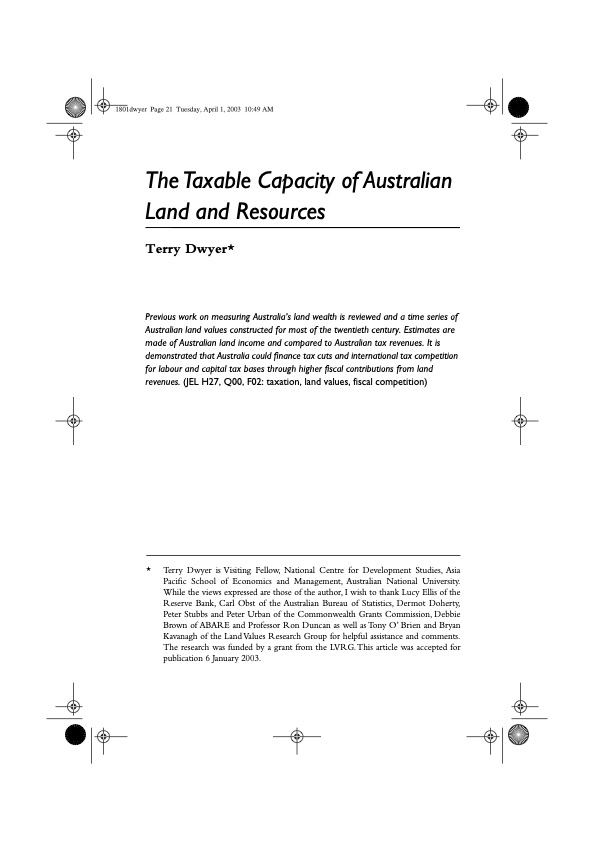By Terry Dwyer, Visiting Fellow, National Centre for Development Studies, Asia Pacific School of Economics and Management, Australian National University.
Introduction
As the liberalization of financial markets and removal of tariff and non- tariff barriers to free trade in goods and services proceeds, greater interest is emerging in optimal tax policies for open economies. On one side are those who argue that globalisation requires some form of international tax organization to protect capital income tax bases from erosion and who sometimes refer to tax competition as part of “the dark side of globalisation.” On the other side are those (including the present author) who regard tax competition as a healthy force driving reluctant bureaucracies towards more sensible low-tax policies for mobile factors of production. The debate is becoming more fierce as globalisation proceeds and issues of privacy, national sovereignty and individual liberty will soon be debated as fiercely as at the time of the American Revolution.
A natural question thus arises: if one does not favour a global tax police to enforce residence-based taxes on capital income and if one does not favour higher taxes on labour income, where is the money to fund governments to come from? Does globalisation necessarily mean the end of redistributive fiscal policies to help the socially disadvantaged? Those who remember their Adam Smith will recall that the national income arises from land, labour and capital and, as Adam Smith recognized, taxes must come from one or more of these three factors of production. They will further remember that Adam Smith praised taxes on ground rents and that, if he was not a Physiocrat, his tax policy recommendations were remarkably close to those of the Physiocrats. Given the pressure income tax systems are under from globalisation and excessive revenue demands, it does not seem an unduly antiquarian pursuit to ask how much revenue could a developed country such as Australia raise from its land and natural resources. Is there an alternative to ever harsher and rising taxes on capital and labour incomes?
Section II reviews conceptual issues in measuring land income in relation to taxable capacity. Section III reviews previous attempts to measure the value of Australian land and explores practical difficulties involved in measuring land income. Section IV presents the author’s estimates of land income as a percentage of Australian tax revenues for most of the twentieth century. Section V concludes that land income is a sufficiently large tax base as to enable Australia to reduce very substantially income tax rates on labour and capital. Australia can cut taxes on mobile factors of production to compete successfully for global investment without losing its ability to fund a viable public sector.
(…)






